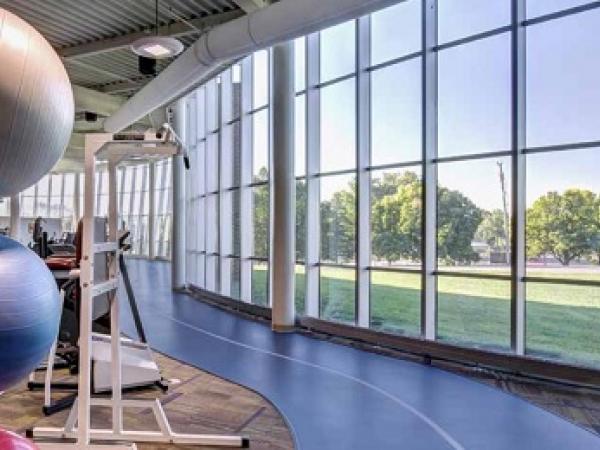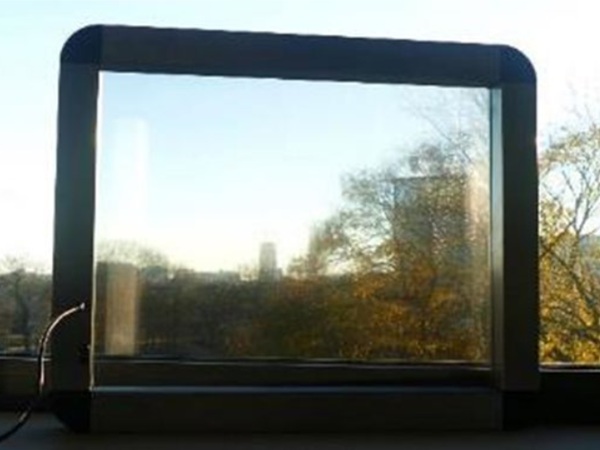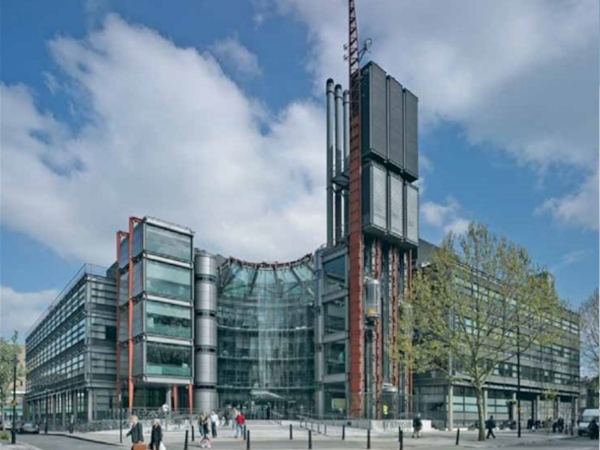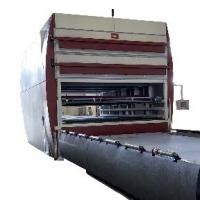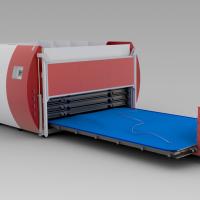The Center, a 20-bed Critical Access Hospital, is located in a park-like setting. Recently remodelled, it features spacious private rooms offering the latest technologies complemented by well-trained staff.
Serving the needs of residents in Butler County, and surrounding communities it also offers a Wellness Center that features cardiovascular fitness and weighttraining equipment, with membership being open to the community.
.jpg)
The curtain wall, which employs SageGlass® electrochromic glass and SentryGlas® ionoplast interlayers, controls solar gain and glare without impacting on the internal brightness of the open spaces.
Situated on the south-facing aspect of the facility, the new Wellness Center features a 6.7 m (22 ft) high 279 sqm (3,000 sqft) curved glass curtain wall. Its south-facing position had the potential to present significant issues relating to heat gain and glare had the architects not employed SageGlass®, an electrochromic glass deployed specifically to control solar gain and glare while maximising the daylight entering the open spaces within the Center.
As well as providing an active response to sunlight SageGlass® also leverages the capabilities of SentryGlas® an ionoplast interlayer, which not only offers a stronger and lighter glass laminate but also enhanced durability and edge performance. From a safety perspective, it also retains glass fragments in the event of breakage, keeping them bonded to the interlayer and preventing injury to people below.
According to Derek Malmquist Vice President of Marketing at SAGE Electrochromics: “There are a number of primary reasons why we use SentryGlas®. It offers excellent colour neutrality so there is less yellowing of the panels over time.
The stiffness and strength of the interlayer is also important for functional and safety reasons for impact and load resistance while from a weather and environment perspective it offers good durability.”
According to Malmquist: “The architect, Visions in Architecture (VIA), a specialist in health care design, employs Integrated Project Delivery (IPD), which taps into the expertise of all subcontractors and suppliers early in the design process so that they can collaboratively weigh in on problems and solutions.”
Using this approach, the glazing contractor, City Glass Company, realised early in the project that mechanical shades would not be suitable due to the complexity of the curtain wall, which flares out at a 7 degree angle in curved pie-shaped forms. Shades would also block the beautiful view beautiful views of a park and golf course available to users of the Center.
Shades would also have presented ongoing hygienic and maintenance problems for the hospital due to dust and germ accumulation. Electrochromic glass made the most sense for controlling the sun and heat gain without cutting off the wellness Center from the community.
.jpg)
It has long been understood that daylight and pleasant natural views from an elevated position can help people to recover naturally while providing a feeling of wellbeing.
The curtain wall is actually dynamic and is programmed to follow the sun. In operation, SageGlass® automatically tints in vertical sections, based on the time of day and season in relation to the sun’s angle. Throughout the day people can see the tinting process “magically” move across the façade as the sun moves westward across the horizon.
It has long been understood that daylight and pleasant natural views from an elevated position can help people to recover naturally while providing a feeling of wellbeing. In this instance, the excellent combination of SageGlass® and SentryGlas® has resulted in a curtain wall that lets in the very best of Mother Nature while restricting any detrimental effects created by too much direct sunlight.
Lighter façade panels enable more subtle supporting structures
For decades, interlayers made of polyvinyl butyral (PVB) have been the industry standard when producing laminated safety glass. Architects are well aware of the possibilities and limitations of such glass when used extensively in façade engineering, for roofing and window panels.
In contrast, SentryGlas® enables an entirely new approach because the interlayer is over 100 times stiffer and five times stronger than PVB. As a consequence, there is an almost perfect transmission of load between two laminated sheets of glass, even at high temperatures, leading to the excellent flexural behavior of the glass when under load – also under direct sunlight in high summer.
Accordingly, laminates with SentryGlas® show less than half the rate of deflection when compared to laminates with PVB, when under the same load, and thus almost the same behavior as monolithic glass of the same thickness.
.jpg)
As well as improved strength and stiffness, other benefits of SentryGlas® include:
- Safety: In the event of breakage, glass fragments remain firmly bonded to the interlayer, reducing the chance for injury
- Security: SentryGlas® can be used in glazing that withstands bullets, hurricane-force winds and even bomb blasts
- Durability: SentryGlas® is extremely durable and resistant to clouding, even after years of exposure
- Design Versatility: SentryGlas® can be used in glass manufactured flat or curved, including annealed, toughened, heat-strengthened, spandrel, wired, patterned and color tinted glass
- UV control: SentryGlas® is available with or without UV transmittance
REGIONAL CONTACT CENTERS
Kuraray Co., LTD
Ote Center Bldg.
1-1-3, Otemachi
Chiyoda-ku, Tokyo, 100-8115, Japan
Phone: +81 3 6701 1508
Kuraray Europe GmbH
Glass Laminating Solutions
Philipp-Reis-Str. 4
65795 Hattersheim, Germany
Phone: +49 (0) 69 30585300
Kuraray Americas, Inc.
2625 Bay Area Blvd. #600
Houston TX 77058, USA
Phone: +1.800.423.9762
Kuraray Mexico S.de R.L. de C.V.
Homero 206, Polanco V seccion,
cp 11570,
Mexico City, Mexico
Phone: +52 55 5722 1043
For further information about SentryGlas®, please visit
www.sentryglas.com
.jpg)

